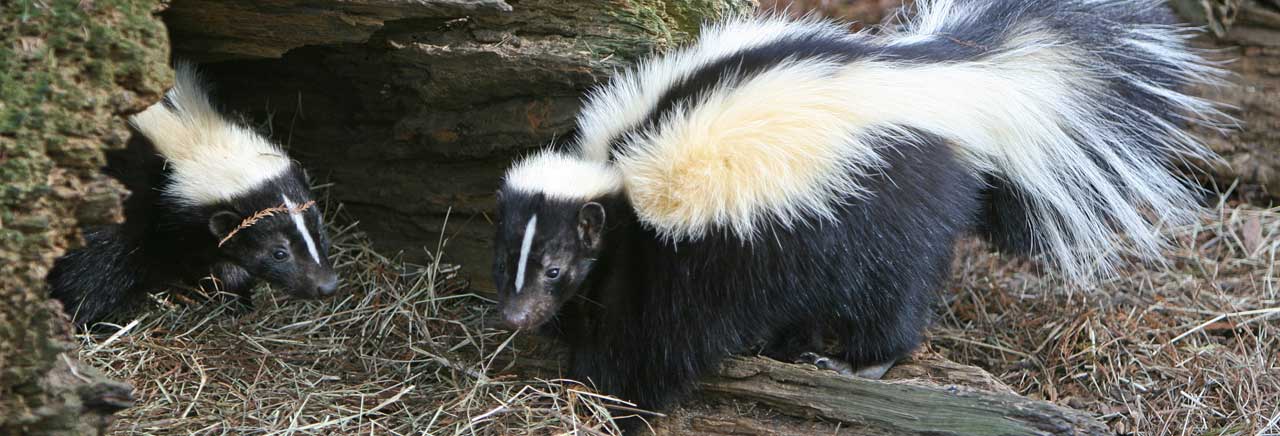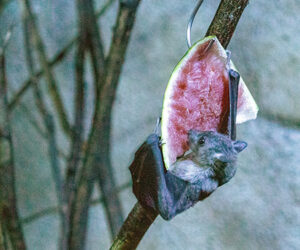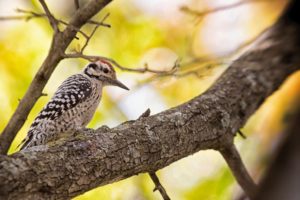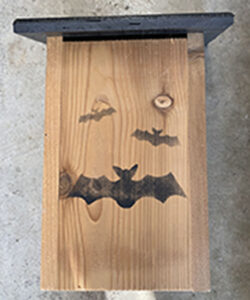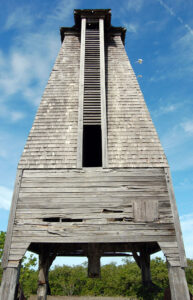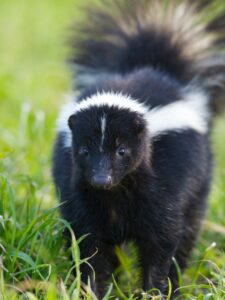
The striped skunk is most commonly found in Pennsylvania and belongs to the mustelid family which also includes weasels, ferrets, martens, fishers, mink, otters, and badgers.
About Skunks
Adult skunks are about 2 feet long including their 7-10 inch tail. They can weigh between 3-12 lbs depending on age, sex, physical condition, and time of the year.
Moreover, males are about 15% heavier than female skunks. They have small heads with small eyes and ears, pointed noses, short legs, and wide rear ends. The claws of the skunk’s forefeet are long and sharp, well-adapted to digging. The striped skunk is most commonly found in Pennsylvania.
What do they do?
Skunks make a variety of sounds including hisses, growls, squeals, cooing, and churring. Skunks are placid and sluggish; they walk in a slow and clumsy gallop, and they can swim but are poor climbers. Their senses of sight, smell, and sound have been judged poor to fair.
Their defense mechanism is their potent scent that sprays from 2 large scent glands. Musk, or their spray, is an oily liquid that is highly repellent to all mammals. Their musk can spray up to 12 feet but is their last resort in the line of defense. They will drum their forefeet on the ground while growling, hissing, arching their back, and filling their tails.
Striped skunks are omnivores! In summer, they feed heavily on insects; grasshoppers, crickets, beetles, and wasps. They also dig out bumblebee nests and scratch at the entrance of beehives, catching and eating honeybees that fly out. They often leave remnants of their feeding; small cone-shaped holes in the soil, pine needles, leaf duff, or suburban lawns mark where they’ve dug for grubs. They also eat spiders, toads, frogs, lizards, snakes, mice, chipmunks, turtle eggs, and ground-nesting birds. In fall and winter, skunks eat fruits such as wild grapes, cherries, moles, mice, voles, shrews, grasses, leaves, buds, mast, and carrion.
They are nocturnal animals, they hunt from dusk until dawn. They den in ground burrows, beneath buildings, stumps, wood, rock piles, and overhanging creek banks. Skunks will use abandoned woodchuck burrows. They like sloped spaces for dens, most likely because they drain well. Their breeding season runs from February to March.
Skunks do not hibernate although they might remain dormant underground all winter. Skunks like to live in a variety of habitats. They like mixed woods and brushland, rolling weedy fields, fencerows, wooded ravines, and rocky outcrops in or near agricultural areas. They use hayfields, pastures, fencerows, and brush borders of waterways. Corn fields are ideal feeding habitats.
What Damage Do They Cause?
Skunks are burrowers and diggers, using these skills to find any weak spots in your foundation and crawl spaces they can use to find an entrance to their new home. They can damage electrical wiring and plumbing. Due to skunks preferring to den together, there may be a family living in your home. They also like areas under sheds and decks.
How To Get Rid of Skunks
We offer skunk removal! We start all jobs with an interior and exterior inspection of the home so we can determine where the animals are entering and living. Physical removal is the best approach as we only use traps and methods approved by the PA Game Commission. We also offer exclusion services to prevent skunks from coming back.
We’re your licensed and insured skunk removal experts in Pennsylvania, give us a call or use our contact form if you believe you have skunks living near your home!
